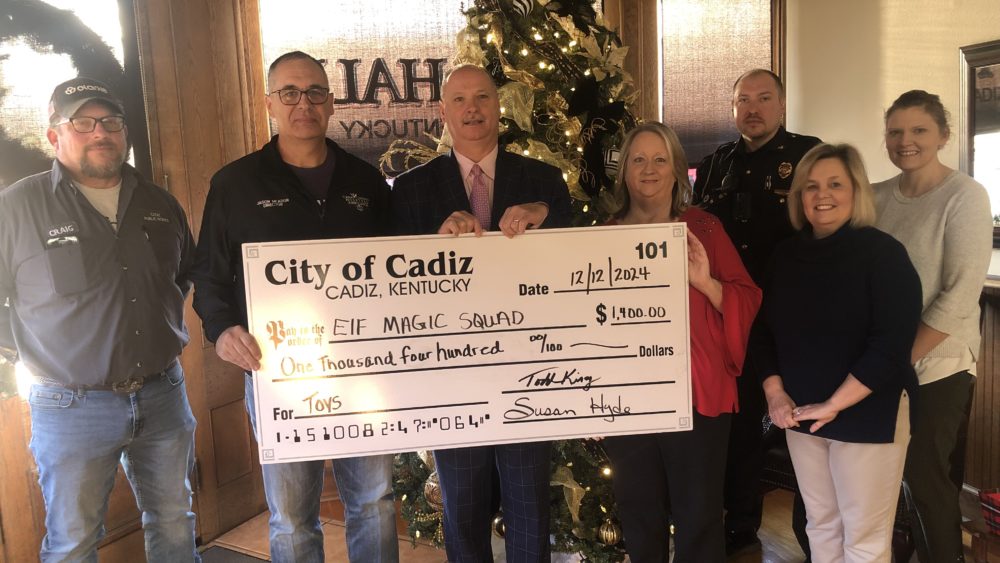With thunderstorms set to rattle several parts of the nation this week, more lives will be at risk. Anyone planning to spend time outdoors are urged to review key lightning safety tips to avoid becoming another lightning death statistic.
Only a small number of thunderstorms become strong enough to produce damaging winds, large hail and tornadoes, but every thunderstorm produces lightning. Unfortunately, just in the last 2 weeks, lightning has taken the lives of five people. One of them was in a campground in nearby Land Between the Lakes. Those deaths brought the total of  lightning deaths in the U.S. to 18 people so far.
lightning deaths in the U.S. to 18 people so far.
On average, 49 people are killed by lightning in the U.S. each year. Hundreds more are severely injured, according to the NWS. Those are scary numbers! Lightning deaths can easily be prevented by knowing a few facts and how to react when lightning is nearby. An estimated 25 million flashes of lightning strike every year across the U.S. Many lightning strikes are harmless and have very little effect on people and the environment. However, people should keep in mind that it only takes one to endanger lives and cause damage to property.
The average lightning bolt is only one to two inches wide and several miles long. Lightning causes 30,000 house fires and $5 billion in damages in the U.S. per year. As soon as thunder is heard, the danger of being struck by lightning is present. A bolt of lightning can strike people and buildings 10 miles away from where it is raining. In extremely rare cases, lightning has been detected almost 50 miles from the thunderstorm.
Lightning usually tries to  find the quickest path to the ground. Never seek shelter underneath a tree. The lightning charge can strike the tree, then cause fatalities up to 100 feet away. Avoid lakes, streams and swimming pools since water conducts electricity. An umbrella will provide protection from a thunderstorm's rain but could also act as a lightning rod. A sturdy and enclosed building or a vehicle is the safest place to be during a thunderstorm. Water, windows, plumbing and electrical appliances should be avoided. It is safer to use a cell phone than a cord phone when inside. The metal frame of a vehicle is what protects people during a thunderstorm, not the rubber tires. Anyone riding a motorcycle or bicycle should seek shelter when a thunderstorm threatens. Remain inside for 30 minutes after the last rumble of thunder is heard.
find the quickest path to the ground. Never seek shelter underneath a tree. The lightning charge can strike the tree, then cause fatalities up to 100 feet away. Avoid lakes, streams and swimming pools since water conducts electricity. An umbrella will provide protection from a thunderstorm's rain but could also act as a lightning rod. A sturdy and enclosed building or a vehicle is the safest place to be during a thunderstorm. Water, windows, plumbing and electrical appliances should be avoided. It is safer to use a cell phone than a cord phone when inside. The metal frame of a vehicle is what protects people during a thunderstorm, not the rubber tires. Anyone riding a motorcycle or bicycle should seek shelter when a thunderstorm threatens. Remain inside for 30 minutes after the last rumble of thunder is heard.
If you are with someone who gets struck by lightning, there is no threat of electrocution from touching him/her. "Cardiac arrest and irregularities, burns and nerve damage are common in cases where people are struck by lightning," according to the NWS. "However, with proper treatment, including CPR if necessary, most victims survive a lightning strike." Men account for 79% of all lightning deaths while women account for 21%. Fishermen account for more than four times as  many lightning deaths as golfers. The deadliest month for lightning deaths is July with 10 on average, followed by June with 7 and August with 5. With thunderstorms being so common this year, it is more important than ever to take appropriate action when storms approach. Use the 30/30 rule! After seeing a flash of lightning, count the seconds between the flash and when you hear thunder. If that number is less than 30 seconds, lightning is close enough to be a threat. The second 30 is the amount of minutes you should wait before going outside after a storm is over, to ensure the storm is far enough away.
many lightning deaths as golfers. The deadliest month for lightning deaths is July with 10 on average, followed by June with 7 and August with 5. With thunderstorms being so common this year, it is more important than ever to take appropriate action when storms approach. Use the 30/30 rule! After seeing a flash of lightning, count the seconds between the flash and when you hear thunder. If that number is less than 30 seconds, lightning is close enough to be a threat. The second 30 is the amount of minutes you should wait before going outside after a storm is over, to ensure the storm is far enough away.
Don't become part of the statistic! Lightning-related deaths are preventable if you pay attention to your surroundings, the weather and if you know where to take shelter when a storm approaches. Feel free to comment on this post and be sure to hit the “Like” button at the bottom.






